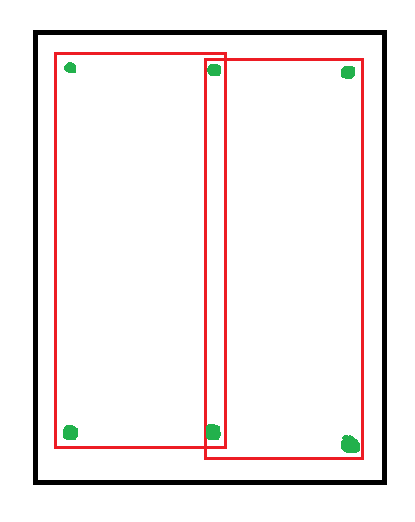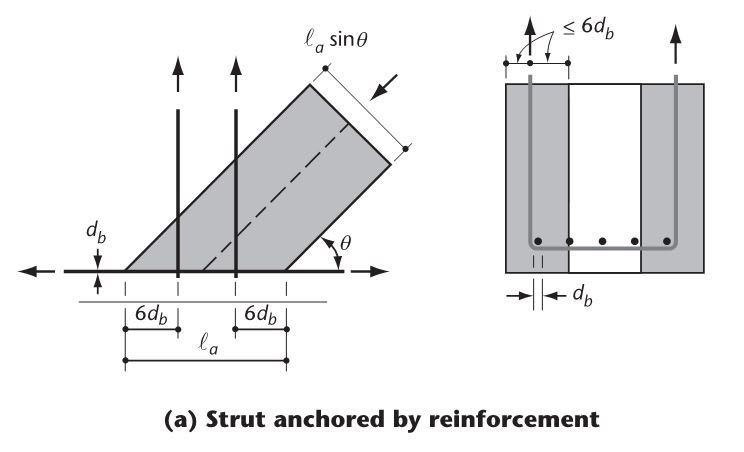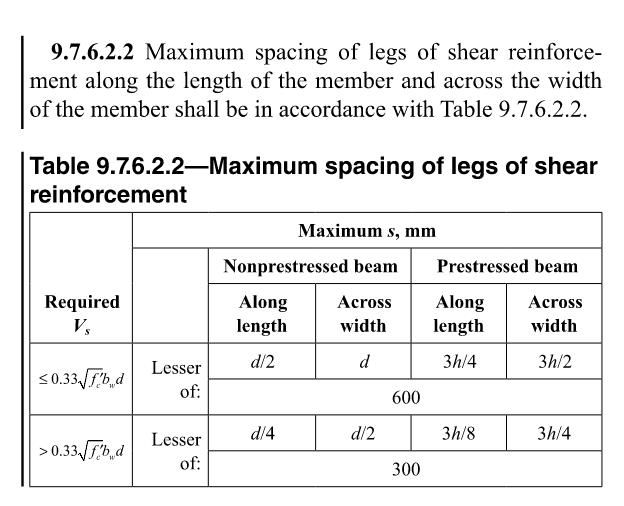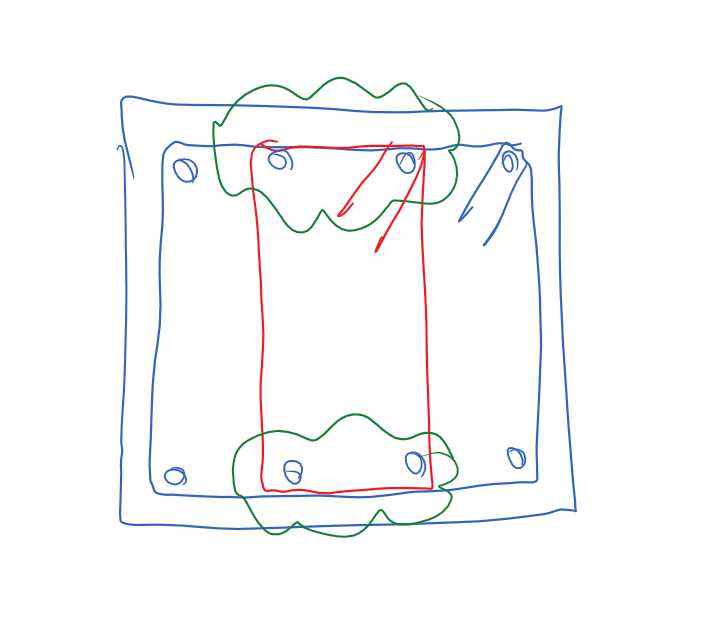I would not be worried about the spacing between the two legs in that arrangement (as gusmurr posted), having said that I'd never personally detail a stirrup set like that with two overlapping stirrups over one bar.
For one it is bloody hard to build in that arrangement and secondly, it's just a poorer detail compared to a single stirrup with a central link, especially for a capping beam as per OP's post which I assume is on top of some piles in a retaining wall or something like that where you'd usually have some horizontal shear as well that you'd need to resist?
For example, we often have stirrups like those shown below in a beam and do not worry about clear spacing along the top and bottom surfaces at the green cloud between the individual stirrups where stirrups are pushed hard against one another..... does anyone worry about this... ?
For spacing of individual legs across a section follow the table from ACI Kootk posted. The NZ code which I mainly deal with has had similar provisions long before ACI added them. To some degree, you can exercise some judgement as long as an average spacing is satisfied. These spacings are required to prevent the vertical struts within a beam from becoming too shallow and causing perpendicular tension across the top or bottom face of the member causing concrete tension cracks (which your proposed arrangement would also be rubbish for resisting by the way....)
Greenalleycat, have a look at clause 9.3.9.4.12(b) in NZS3101, there are specific provisions for NZ code to cover this

.... it's not worded that well, but it is there. A lot of people seem to miss the 'at right angles' thing...






